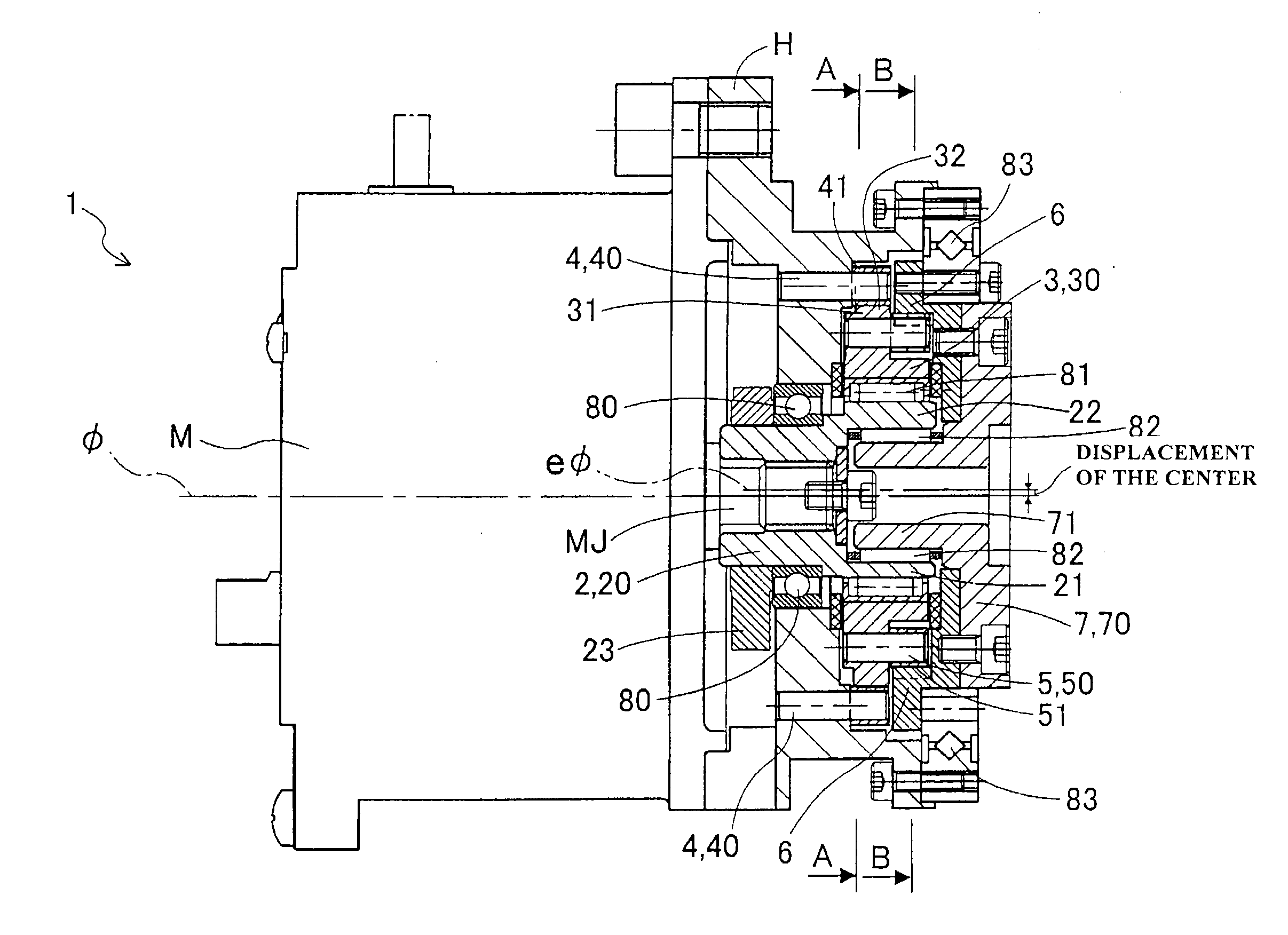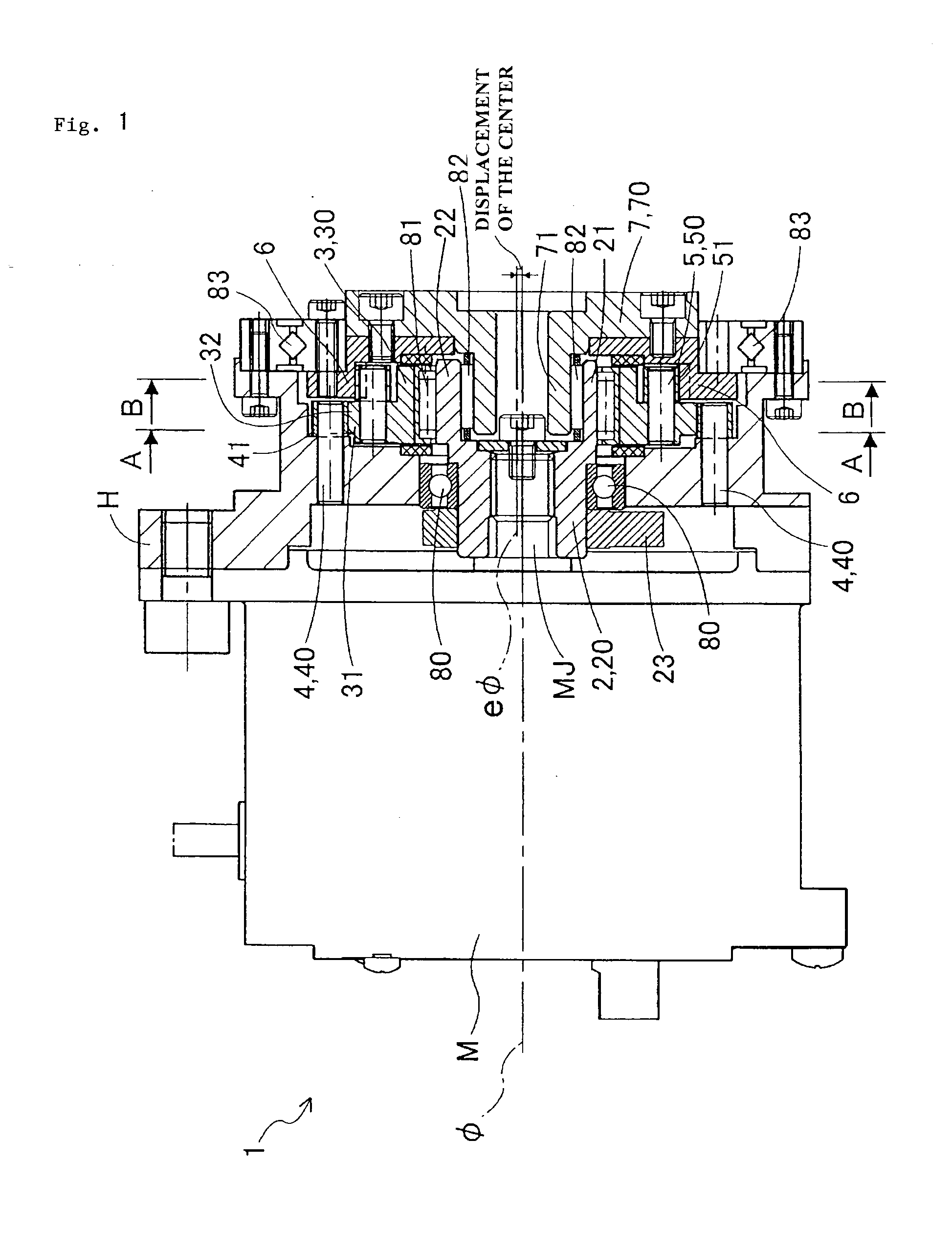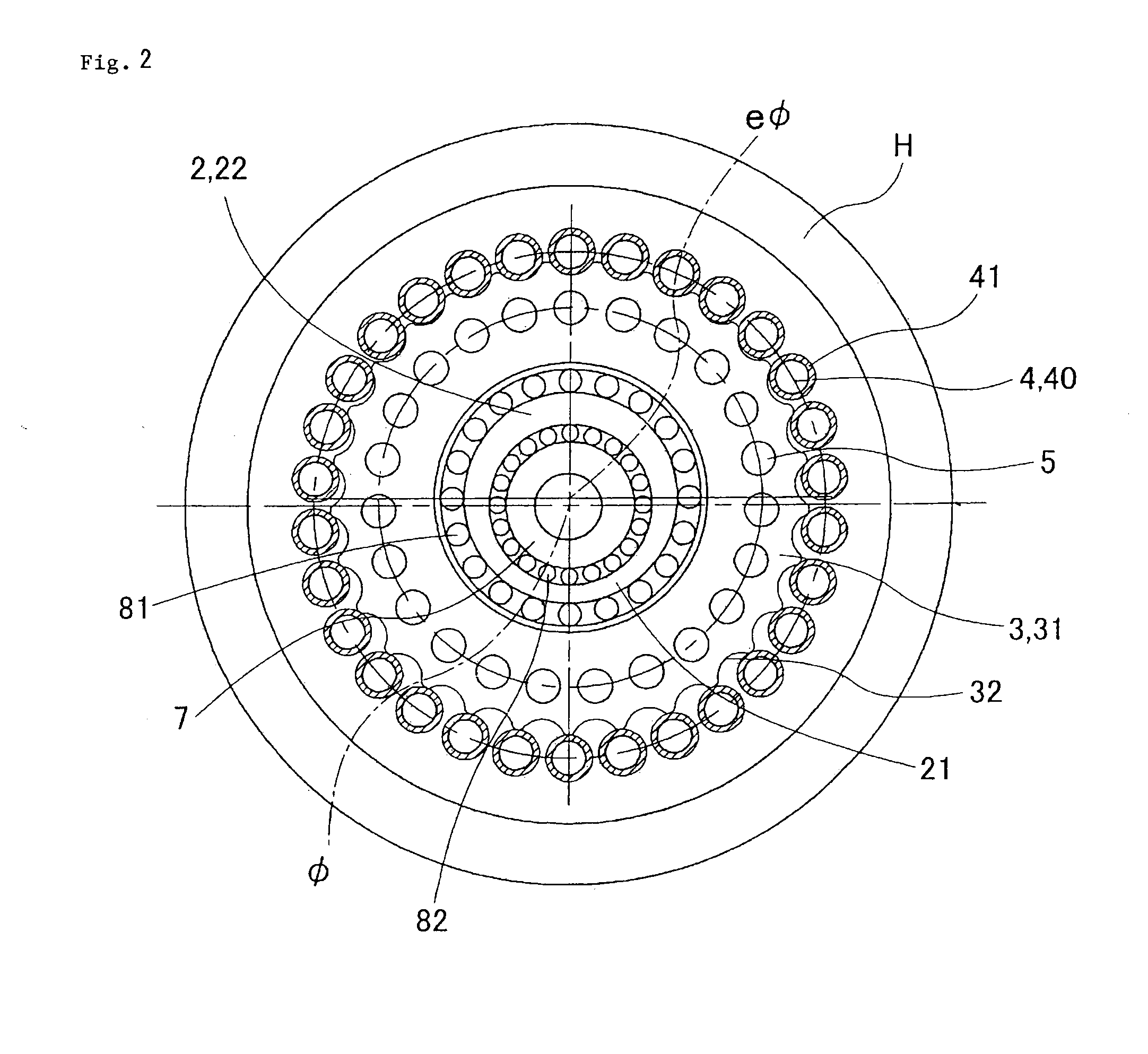Planetary gear mechanism
a technology of planetary gear and gear mechanism, which is applied in the direction of gearing, differential gearing, mechanical equipment, etc., can solve the problems of high cost, large installation space, and inability to provide a large speed change ratio, and achieves small size, high torque, and large speed change ratio
- Summary
- Abstract
- Description
- Claims
- Application Information
AI Technical Summary
Benefits of technology
Problems solved by technology
Method used
Image
Examples
first embodiment
Another Modified Example of First Embodiment
[0111]In the above-described embodiment, the gear mechanism of the invention is applied to the speed reducer 1 that transmits driving force of the motor M applied to the input shaft 2, to the output shaft 7, while reducing its speed. However, the gear mechanism may be applied to a speed increasing device that transmits driving force applied to the output shaft 7, to the input shaft 2, while increasing its speed.
Second Embodiment
[0112]Next, a speed reducer 1K according to a second embodiment will be described in terms of its differences from the speed reducer 1 as described above, with reference to FIG. 6 through FIG. 9. As shown in FIG. 6, a case C1 (corresponding to the first member of the invention) of a motor M1 (corresponding to the electric motor of the invention) is formed integrally with a housing of the speed reducer 1K. The case C1 also serves as the housing of the speed reducer 1K, and rotatably supports an output shaft 700 (corr...
second embodiment
Modified Examples of Second Embodiment
[0129]The inner ring of the output shaft supporting bearing 803 is not necessarily formed integrally with the output shaft 700, but an inner ring may be provided independently of the output shaft 700.
[0130]In the speed reducer 1K, the output shaft 700 may be nonrotatably fixed, and the case C1 may be rotatable about the axis of the input and output shafts. Also, the output shaft 700 and the case C1 may be both rotatable about the axis of the input and output shafts, and reduced-speed rotation may be delivered at a given ratio to the output shaft 700 and the case C1, respectively.
[0131]In the speed reducer 1 of the first embodiment, weight reducing holes serving as the counter balancer 23 may be provided in the input shaft 2.
[0132]In the speed reducer 1 of the first embodiment, the inner ring of the output shaft supporting bearing 83 may be formed integrally with the output shaft 7.
[0133]In the speed reducer 1 of the first embodiment, the input s...
PUM
 Login to View More
Login to View More Abstract
Description
Claims
Application Information
 Login to View More
Login to View More - R&D
- Intellectual Property
- Life Sciences
- Materials
- Tech Scout
- Unparalleled Data Quality
- Higher Quality Content
- 60% Fewer Hallucinations
Browse by: Latest US Patents, China's latest patents, Technical Efficacy Thesaurus, Application Domain, Technology Topic, Popular Technical Reports.
© 2025 PatSnap. All rights reserved.Legal|Privacy policy|Modern Slavery Act Transparency Statement|Sitemap|About US| Contact US: help@patsnap.com



